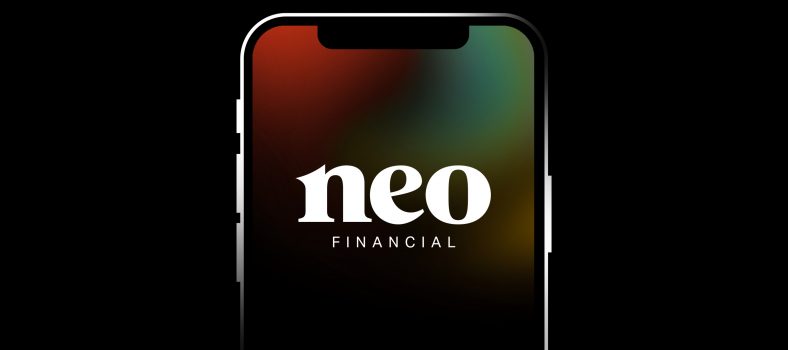 By Richard Schenker
By Richard Schenker
When designing a loyalty program, many brands do not afford sufficient priority and resources to building a highly impactful Loyalty Lifecycle Marketing Strategy. While in the throes of the development of a loyalty program, brands tend to be overly preoccupied with devising the mechanics of a loyalty program, such as earn and burn rates, rewards portfolios, tiers, conditions, and restriction.
Although these are all very important programmatic decisions, brands often tend to defer thinking about the Loyalty Lifecycle Marketing Strategy until the tail end of the design process. Unfortunately, this results in a half-baked Loyalty Lifecycle Marketing strategy as the time horizon towards launch gets closer and closer, with mounting pressure to place the loyalty program into market.
This is a significant missed opportunity, as many brands launch their programs without a well thought out and robust Loyalty Lifecycle Marketing plan. Consequently, they do not reap the full business benefits and efficacy from their loyalty program. A well-designed Loyalty Lifecycle Marketing solution can bump loyalty program sales growth by up to 10 percent, based on the brands which I have worked with during my career.
So just for greater clarity, what is a Loyalty Lifecycle Marketing Strategy? It’s a defined marketing communication discipline to be leveraged by a brand to attract, onboard, engage and retain loyalty members through their entire journey with a brand.
How does a brand accomplish this? By understanding their members’ needs and addressing the different stages of the member lifecycle and journey, and proactively delivering timely, dynamic, targeted and personalized omni-channel communications in the form of content, offers and experiences.
What can a brand expect to achieve? Highly profitable member behaviours, sales growth, and fortification of the members’ relationship with the brand.
The Brand seeks the following objectives/outcomes from a Loyalty Lifecycle Marketing Strategy:
1. Relationship Building – An understanding of its members’ needs and aspirations and greater reciprocal connectivity.
2. Emotional Commitment – Emotional connectivity and advocacy towards the brand.
3. Education – Proficient understanding of the intricacies and merits of the loyalty program and how to best make the most out of the program, the experience with the brand and its partners.
4. Engagement – Relevant and personalized content, monetary offers/incentives that motivate members to grow their transactional relationship with the brand and its partners.
5. Retention – Compelling reasons and incentives in the form of content, offers and motivation to stay loyal to the brand and its partners. Automatically predict, detect, and remedy member decline in engagement and/or attrition.
6. Optimized Velocity – A reasonable and acceptable volume of communication that is considerate of the expectations, needs and tolerances of members.
7. Profitable Sales Growth – Profitable growth of members’ share of wallet and lifetime value, through financially accretive lifecycle campaigns.
Program Members seek the following from a Loyalty Lifecycle Marketing Strategy:
1. Value – Tangible and meaningful monetary value.
2. Simplicity – Easy to understand, engage with and communicate to others.
3. Experience Enriching – A consistently enriched member experience coupled with a heightened level of satisfaction with the brand, along every touch point of the member’s journey.
4. Relevancy – Meaningful, purposeful, and mindful of a member’s life stage, milestones, need states, environment and where they are in their journey with the brand.
5. Convenience – Benefits that engender greater simplicity and ease of experience resulting in a preferred experience with the brand.
6. Confidence – Trust and “peace-of-mind” in the delivery of services at each interaction with the brand and it’s partners.
7. Inspiration – Encouragement, motivation, and assistance to members to reach their personal programmatic (and often goals in life) with the brand.
8. Empathy & Helpfulness – Proactively reinforce that the brand “has its members’ backs” along each step of their journey with the brand.
9. Recognition & Reciprocal Loyalty – Regular acknowledgement of program achievements and recognition of members’ loyalty to the brand.
10. Enjoyment – Heightened satisfaction, engagement, comfort, and happiness with each communication.
Some of the most important guiding principles or characteristics to consider when designing an effective Loyalty Lifecycle Marketing Strategy include:
1. Brand-Congruency – In service to and aligned with the brand’s purpose, goals, tone, and personality.
2. Value – Provide tangible and meaningful monetary and/or educational value to members.
3. Motivational – Foster encouragement and inspiration to members to reach their loyalty program goals.
4. Experience Enhancing – Authentically enhance member interactions with the brand across each touch point in the journey with the brand and its partners.
5. Personalized – Meaningful relevance, material to the specific member’s life stage, needs, surrounding environment, solving pain points, unlocking personal aspirations with the program and/or brand proper.
6. Timely – Delivered at the right moment, with the right frequency and with sufficient time to act.
7. Customized – Personalized and curated to individual member’s unique needs, aspirations, and level of engagement with the loyalty program and the brand proper.
8. Engaging – Provokes a familiar or unfamiliar behaviour aimed to encourage members to increase their engagement with the brand.
9. Consistent UX – The UX must be simple to engage with, familiar to navigate, and consistent across channels.
10. Measurable – All marketing communication motions must be easily tracked and measured.
A Loyalty Lifecycle must embody the following design requirements:
1. Brand & Loyalty Integrated – The brand and loyalty program communications need to be orchestrated and harmonized to be distinct and purposefully integrated.
2. Omni-Channel – Capability to deliver communications in all digital channels based on members’ channel preferences.
3. Personalized – Delivery of dynamic content and offers differentially to members in order to optimize member behaviour.
4. Seamless Digital UI & UX – The member experience must be delivered consistently, seamlessly, simply and in an intuitive manner.
5. Automated – The ability to automate campaigns based on actions and inactions of members and deploy behavioural triggers irrespective of communication channels.
6. Contact Controlled – The capability to control the pace and frequency of communications right down to a specific member.
7. Data Driven – Ability to consume and utilize zero, first party, second party (and third-party data) to design personalized campaigns efficiently and expeditiously.
8. Analytically Optimized – Efficiently and effectively utilize data analytics to create relevant messaging based on members’ lifecycle stages and observed behaviours (actions and inactions).
9. Scalability – Progressively and efficiently expand the sophistication of the Lifecyle Marketing Strategy over time.
10. Compliance – Capabilities to comply with existing and emerging privacy regulations.
A Loyalty Lifecycle Marketing Strategy is a critical driver of loyalty program success. It requires meticulous planning and commitment and should be constantly evolving to meet the needs of members and the brand’s business objectives and priorities. While it should be fully integrated into the design of a loyalty program prior to launch, brands who have not done this effectively from the outset, should be overhauling and reimagining their Loyalty Lifecycle Marketing Strategy now.
Every day that a brand operates their loyalty program without a highly functioning Loyalty Lifecycle Marketing Strategy, they are missing out on fully fortifying their transactional and emotional relationship with program members. Suffice it to say, they are making it easier for their competitors to capture market share and are not capitalizing on their brand’s sales growth potential.
About the Author: Richard Schenker is a highly accomplished customer engagement thought leader, loyalty practitioner and partnership curator who has designed, renovated, and managed some of the world’s leading customer loyalty programs. He has an impeccable track record of success at enriching transactional and emotional relationships between iconic brands and their customers, across multiple business sectors. Richard has spent the first half of his career in senior loyalty roles with the Hudson’s Bay Company and Shoppers Drug Mart and the remainder of his career in leadership roles with leading loyalty agencies, Air Miles and Bond Brand Loyalty. Currently he is the Founder & Chief Customer Engagement Officer of Loyal Strategy Consulting, a consulting firm focused on enriching customer loyalty for leading brands. Richard can be reached at: rschenker@loyalstrategyconsulting.com or visit: https://loyalstrategyconsulting.com




